The “Last Judgment” is the Christian idea that after the end of the world, Armageddon, even dead people will be resurrected and Christ will return to judge mankind.
- the end of the world
- Resurrection
- Judgment
These three events are a set.
The result of the judgment will be a division into those who will be found guilty and go to hell (Gehenna) and those who will gain eternal life.
Justice (God’s righteousness) will be realized through the trial by God-Christ.
Michelangelo’s painting on the altar in the Sistine Chapel is famous for this theme.
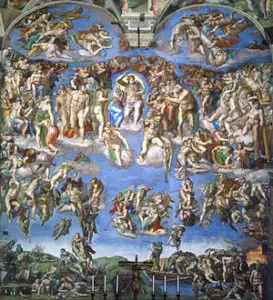
In the center of the painting, the Second Coming of Jesus Christ is raising his right hand in judgment.
On the left side of the image is the one descending to hell, and on the right side is the one ascending to the kingdom of heaven.
Incidentally, many people think that the “Last Judgment” is original to Christianity, but it was also preached in Zoroastrianism, long before the establishment of Christianity.
The final struggle between Ahura Mazda, the god of good, and Anra Mayu (Ahriman), the god of evil, takes place, and after good is victorious, the Last Judgment will be held.
The “Last Judgment” is probably an idea that originated in Zoroastrianism and was taken over by Semitic monotheism (Judaism, Christianity, and Islam).
So it is believed that there will be a Last Judgment in Islam as well.
More surprisingly, there is also a view that the Zoroastrian Last Judgment has also influenced Mahayana Buddhism, especially Pure Land Buddhism.
Just as the Book of Revelation describes a world infested with debauchery and evil before the coming of God’s Kingdom, the Longer Sukhāvatīvyūha Sūtra describes a world of five evil worlds before Amida Buddha’s salvation.
What does the apocalyptic literature symbolize?
When most people think of “Last Judgment,” the first thing that comes to mind is “John’s Revelation.”
This is the account of John’s vision on the Isle of Patmos.
However, even if you read through “John’s Revelation,” it is full of images and allegories, and is written in such a way that it is not clear when, where, or what exactly will happen.
For example, they are described as follows.
And the first beast was like a lion, and the second beast like a calf, and the third beast had a face as a man, and the fourth beast was like a flying eagle.
And the four beasts had each of them six wings about him; and they were full of eyes within: and they rest not day and night, saying, Holy, holy, holy, Lord God Almighty, which was, and is, and is to come. (Revelation 4:7-8)
The “beast” “lion” and “bull” may symbolize something, but what exactly are they?
It may be interesting to decipher, but it is written in such a way that specific information is not readily available.
When will the Last Judgment come?” is immediately written at the beginning of the book.
The revelation from Jesus Christ, which God gave him to show his servants what must soon take place. He made it known by sending his angel to his servant John,(Revelation 1:1)
How soon is “soon”?
Even if someone says, “From God’s point of view, even 10,000 years is ‘soon,'” you may have mixed feelings about it.
However, if one were to venture a reading of the allegory, the common interpretation would be that these statements refer to the end of Roman imperial rule.
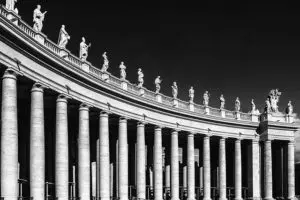
In the Apocalypse, “Four Horsemen of the Apocalypse” is well-known, and this motif is also used in Hollywood movies.
Some people interpret the reason for the number “4” as because the Roman emperor’s chariot had four horses.
The theme of “Revelation 17” is “The Famous Prostitute.”
“The woman you saw is the great city that rules over the kings of the earth.” (Revelation 17:18)
The “woman” is almost certainly the personification of the city of Rome.
In fact, there are several apocalyptic writings in the Old Testament, which are called “apocalyptic literature.
For example, there are apocalyptic descriptions in “Isaiah,” “Daniel,” and “Ezekiel,” and the images depicted in them, such as “beasts” and “horns”…have quite a few things in common with the book of Revelation.
So one could point out that apocalyptic literature is a matter of “end-time warnings” to the empire that was the dominant power at the time in the Judeo-Christian stream.
The other issue is whether each person living under such domination can be “justified before God.
For God will reward every person according to what each has done.(Romans 2:6.)
In this light, it is clear that the Last Judgment is more about the following two points than about the actual coming of the end of the world.
- Judgment against the ruler (empire) of the moment
- Judgment in the sense of whether the life of the individual living in the vortex is righteousness of God.
Relative apocalypse and existential apocalypse
In this way, I think it is fair to say that the Last Judgment does not necessarily have to be taken as “the end” in the sense of “the actual coming of the end of the world and the realization of the Kingdom of God.
So how do we think about it?
As for the first, it is the end of one imperial rule, which is, well, epoch-making, and the issue is the end of an era as a certain “end of an era”.
In short, we can see that the issue is not an absolute end, but a “relative end,” so to speak.
As for the second question, when it comes to “the end of life,” each individual’s concern is, in essence, “What will happen to my life?
In short, the concern is personal and existential apocalypse, so to speak.
Now, with this in mind, let’s put the “Last Judgment” in perspective.
- Relative apocalypse: “social Last Judgment” to see what epoch-making event is about to take place in the age and nation in which one is living.
- Existential apocalypse: “Personal Last Judgment” to see how much you have been righteous to God in this life.
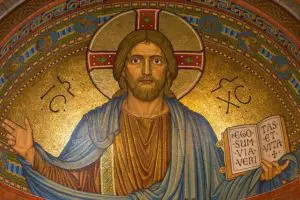
Turning “Last Judgment” into a Theory of Happiness
Now, as mentioned above, even if we consider them separately as “relative apocalypse” and “existential apocalypse,” we still cannot get rid of the feeling that they are scary, can we?
The reason for this is that we view the Last Judgment as a “calamity that comes at us from the outside.
Rather, I recommend that the Last Judgment also be reconsidered from the principle of subjectivity, which is the foundation of the theory of happiness.
For example, what do you think about “existential apocalypse”?
This is, in other words, to use as a source of reflection, “How has my life been from the perspective of God’s eyes, truth-spirituality? What should I do from now on?
Reflecting on oneself in this way and designing one’s future leads to the “attainment of wisdom.
In Buddhist terms, this is equivalent to “self-interest.
Also, what are your thoughts on “relative apocalypse”?
This is to deal with the issue from the perspective of what contribution one can make to the age and community (family, society, nation, and civilization) in which one lives on earth today.
Such acts of contribution are, so to speak, the “practice of compassion,” and in Buddhist terms, would correspond to “altruism.
Thus, instead of passively trembling and wondering when the Last Judgment will come, it is possible to shift to a theory of happiness by focusing on proactivity.

Now that we have moved on to Buddhism, let us once again reinterpret it in a Christian context.
The idea of “self-interest and altruism” may be expressed in Christian terms in the following biblical verses.
Jesus answered, “‘Love the Lord your God with all your heart, with all your soul, and with all your mind.’ 38 This is the greatest and the most important commandment. 39 The second most important commandment is like it: ‘Love your neighbor as you love yourself.’ (Matthew 22:37-39)
Then the following diagram is formed.
- Relative apocalypse ⇢ Altruism = Love of Neighbor
- Existential apocalypse ⇢ Self-interest = love for God
In this way, the idea of apocalypse is not merely a fearful or hobbyistic discussion, but is in line with the principle of improving one’s spiritual rank and utopianizing society.
The “Kingdom of God” and the “Kingdom of the Earth.”
Now, returning to “John’s Revelation” and what eventually happened at the Last Judgment, the Roman Empire, a secular power, was eventually forced to later recognize Christianity and even make it the state religion.
And even after the fall of the Western Roman Empire, the Catholic Church prolonged its life and was later crowned by the Frankish Emperor Karl the Great as the “Reestablishment of the Western Roman Empire,” right?
This was a coronation based on the authority of the Pope, and the situation was the same throughout the Middle Ages and later in the Holy Roman Empire.
As was said, “the Pope is the sun and the emperor is the moon” (Innocent III), the dominance of religious power over secular power continued.
Of course, there are many ways to look at this part of the story.
For now, we can clearly say that the seed sown by Jesus, who was crucified as a sinner, eventually swallowed up the Roman Empire and the foundation of the “Kingdom of God” was laid, which is clearly a “victory of Christ.
This “Kingdom of God” idea relies on Augustine, who also believes that we should not take the apocalyptic idea as it is, but rather view it as a hermeneutic.
From a social (macro perspective), the “Kingdom of God” will not be realized absolutely and exclusively on earth, but rather, it will be realized through a process of conflict with the “Kingdom of the Earth” in terms of dynamics.
This means that, from an individual’s inner perspective (micro perspective), there is a “Kingdom of God” and a “Kingdom of the earth” within each person’s heart, and while they are competing with each other, the “Kingdom of God” is gradually being realized.
By knowing evil, we come to know what goodness is and what God’s righteousness is.
This is in line with the “meaning of life and mission” of why we humans are born on earth.
*Reference article. Meaning and Mission of Life – What is the Most Winning Theory of Success?
What do we think about the “end of the century” phenomenon on a global scale?
Now, Nostradamus’ prophecy that mankind would perish in the month of 7, 1999, is believed to have failed.
There have been various other end-of-the-century prophecies besides Nostradamus.
However, it may not be too early to be relieved that the prediction did not come true and that we are safe now.
Predictions are quite difficult to make, and even when they come true, the timing and region can be off.
This is partly because there is a gap in the flow of time between the real world and the phenomenal world, and partly because people on earth have free choice, so not everything unfolds as destiny dictates.
As I add this article now, on 2022/08/21, the world is in the midst of a coronal pandemic. This is one warning.
There are two types of karma: personal and social.
Social karma is the karma shared by a particular group (community, society, nation).
Personal karma is literally a person’s unique karma.
An individual’s destiny is to some extent determined by the accumulation of thoughts and deeds from past lives to this life.
This is the law of cause and effect. In Buddhist terms, it is called the law of karma.
Similarly, there is the karma that mankind has accumulated up to the 21st century.
It is collective karma.
This is actually quite a big karma, with a considerable accumulation of negative energies, such as world wars, the use of atomic bombs, the Cold War, and atheism and materialism, for example.

How can this social karma be resolved?
The best scenario would be for humanity to repent, awaken to the true law, and voluntarily rebuild civilization, but unfortunately such efforts have been far too inadequate.
The fall of the Roman Empire, mentioned above, is a very limited regional one. It is a “relative apocalypse” in which a particular civilization is destroyed.
However, given the current situation in which information networks and international politics are literally globalized and developed on a global level, “destruction” can also be expected to occur on a global scale.
It may look as if an “absolute apocalypse” has arrived, with the continents sinking and the poles shifting, for example.
“There will be strange things happening to the sun, the moon, and the stars. On earth whole countries will be in despair, afraid of the roar of the sea and the raging tides. People will faint from fear as they wait for what is coming over the whole earth, for the powers in space will be driven from their courses. (Luke 21:25-26)
However, what we must keep in mind is that no matter what happens, not all of humanity will perish.
Such things have happened again and again in the past, albeit on different scales.
The earthly world has been prepared as a place for spiritual evolution, but if the earthly world is too disorganized, it will become like a “hell spirit training center” rather than a place for spiritual training.
Rather than let that happen, the Earth God may decide that it would be better for the soul in the long run to do a great reset and start over in civilization building.
So, knowing that “this world is only a phenomenon. It is impermanent and selfless.” Knowing this, we need to keep the following scripture in mind.
Be on the alert and pray always that you will have the strength to go safely through all those things that will happen and to stand before the Son of Man.” (Luke 21:36)

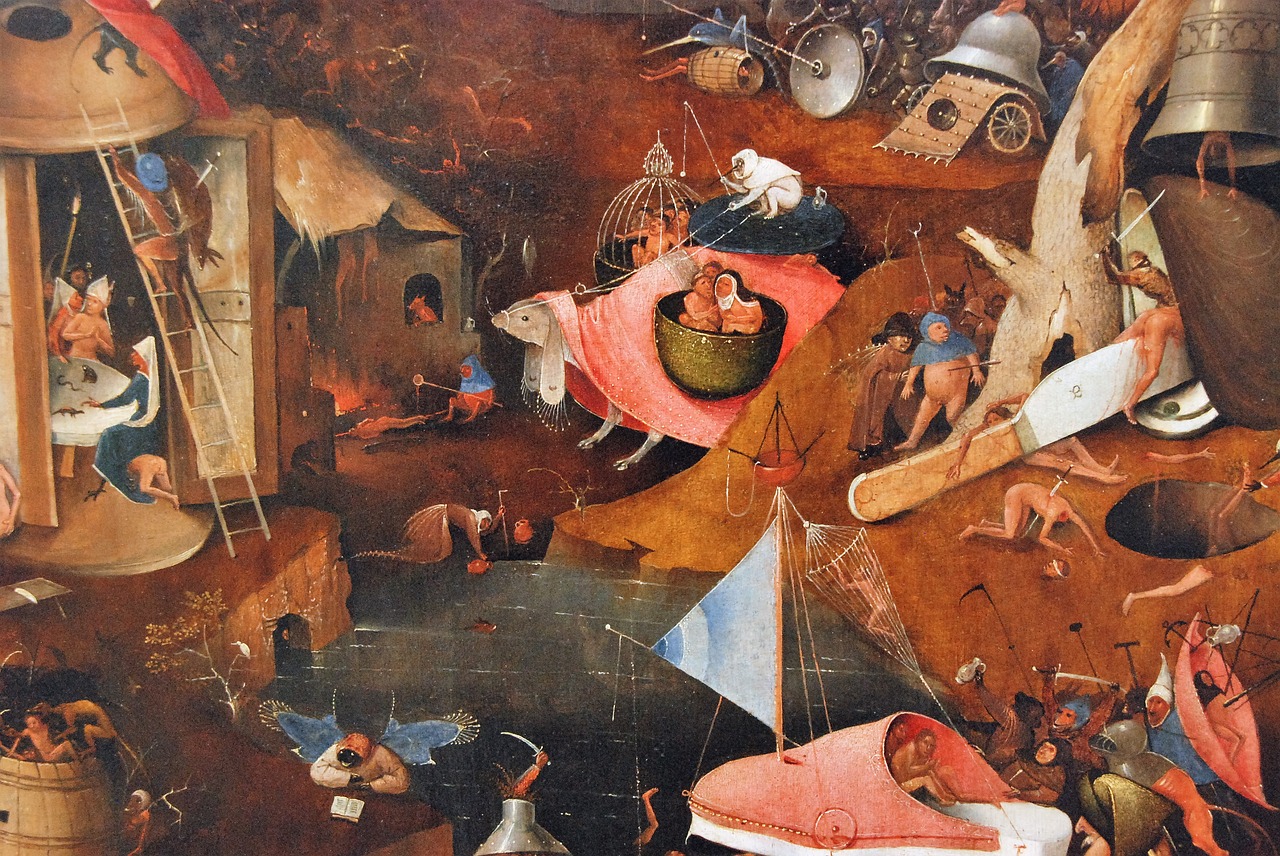
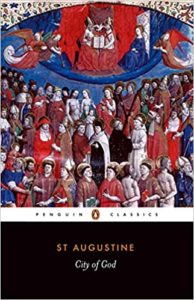


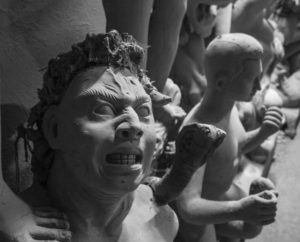
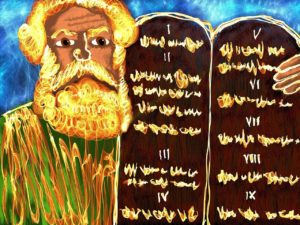

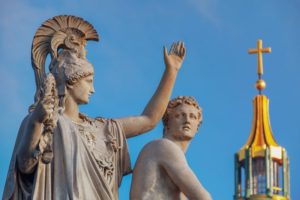


Comments